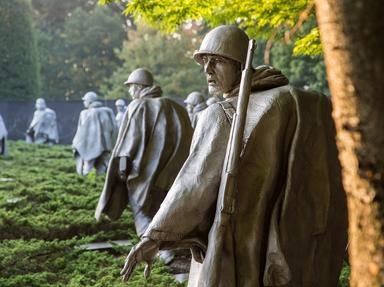Quiz Answer Key and Fun Facts
1. The defeat of what colonial power in World War II effectively led to the North-South split of Korea?
2. At what line of latitude was Korea divided into North and South?
3. The Korean War saw the first jet-versus-jet combat in warfare. Which aircraft type was the victor in this clash?
4. After the initial North Korean attack, the UN troops were pushed back into a defensive line around South Korea's only remaining port. What was this line known as?
5. The breakout from the south was coordinated to link up with an amphibious assault on which port near Seoul?
6. Although the bulk of the United Nations soldiers were from the USA, several other countries contributed forces. Which of these countries did NOT send troops to the Korean theatre?
7. The Korean Peninsula, with its steep hills and rainy climate, is not ideal tank country, so the number of tank-versus-tank combats was relatively low. How many US tanks were recorded as being lost to North Korean or Chinese ones in the course of the war?
8. The advance to the Chinese border caused Chairman Mao to commit a 'volunteer' force that drove the UN forces back almost the length of the Korean Peninsula. What was the forces' name?
9. What year was the cease-fire ending fighting in Korea signed?
10. Run between July and November, what was Operation Glory set up to do?
Source: Author
spaceowl
This quiz was reviewed by FunTrivia editor
trident before going online.
Any errors found in FunTrivia content are routinely corrected through our feedback system.
